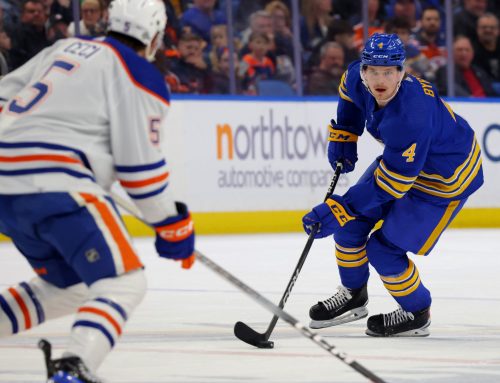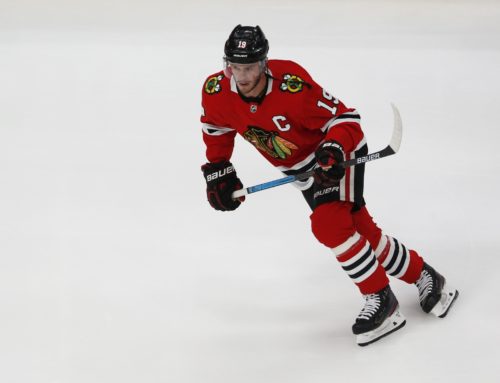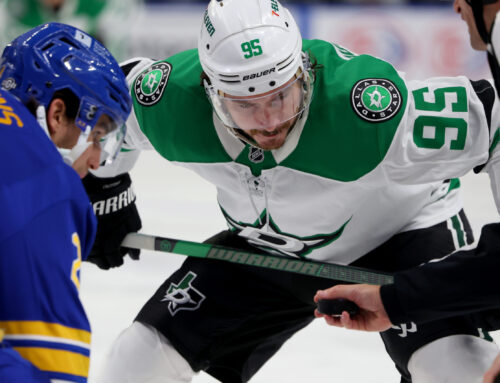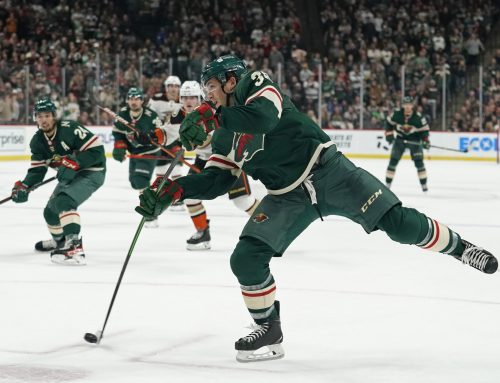If you haven't been to our Dobber Shop to pick up your copy of the 2020 Dobber Hockey Prospects Report, there's no better time than right now! Get the information you need to dominate your pools, whether it's the incoming prospects for 2020, or guys already in each franchise's pipeline. Help support what we do by purchasing the Prospects Report today!
*
I just wanted to mention that Alex MacLean is going to have a very informative 'Capped' column coming out later today. I recommend everyone in cap leagues read through it and bookmark it.
*
Individual points percentage (IPP) is a very important number to know. It's not something regularly discussed even when high-end hockey analysts talk about the game. The reason is that it's tied to points, and points aren't everything in real hockey. They're very important in the fantasy, game, however, so I thought I'd take a Ramblings to talk about it.
What IPP is, very simply, is the percentage of goals on which a player manages a point. So, if Filip Forsberg is on the ice for 100 Nashville goals, and he racks up a point on 60 of them, his IPP is 60 percent. It's usually expressed at 5-on-5, but for today, we'll talk about the power play.
The genesis of this Ramblings was Rick Roos's 'Goldipucks' column yesterday where he talked about David Perron and his IPP. So, let's talk about IPP on the power play. Stats from Natural Stat Trick or our Dobber Tools. We'll be talking about 5-on-4 power plays only, unless otherwise identified.
Obviously, the more talented players will tend to have a higher IPP. Think of it like this: if you're the Rangers, would you rather have Artemi Panarin as the main puck-handler on the power play, or Pavel Buchnevich? No disrespect intended here, but there's a clear answer. When we look at IPP over the last three years, this is the top of the list of forwards (minimum of 500 minutes at 5-on-4):

The two names that might surprise people are Josh Bailey and Teuvo Teravainen, but they're reliable distributors for their respective clubs. Otherwise, we see elite offensive players. Just down the list are names like Kane, Pastrnak, Matthews, and Draisaitl.
We'll note a couple things here, though. Only two players cracked 80 percent, none reached 85 percent, and only a handful surpassed 75 percent; our sample includes 94 forwards and only eight averaged at least 75 percent over the last three years.
The drop-off for defencemen is even steeper. Roman Josi actually leads the league (including forwards) in PPIPP over the last three years at nearly 83 percent. The only other defenceman over 75 percent is Seth Jones (76.6 percent), and only three others are over 70 percent (Burns, Carlson, Karlsson). The sample is smaller – just 27 defencemen – but fewer than 20 percent of all included defencemen averaged better than a 70 percent PPIPP.
So now we have benchmarks we can look towards. For forwards, anything over 75 percent seems rather unsustainable, with over 70 percent for defencemen. Again, elite offensive players will maintain higher rates, but exceedingly high rates will usually come back down. For example, Brent Burns had a 74.1 percent PPIPP in 2016-17, but that was sandwiched by a 65 percent season and a 66.7 percent season.
Let's go through the league, first the forwards and then defencemen in our next Ramblings, to see if we can glean anything from PPIPP information in 2019-20. Minimum of 100 minutes.
Six skaters exceeded a 90 percent IPP in 2019-20. Both David Krejci and Ilya Kovalchuk were at 100 percent, Burns at 93.75 percent, with Josh Morrissey, Evgeni Malkin, and Anze Kopitar coming in between 90-92 percent.
Krejci is interesting because he usually skates on the second PP unit for Boston, which means we'd expect him to have a big hand in how that power play operates. At the same time, before 2019-20, he hadn't been over 70 percent in any season since the 2013 lockout campaign. We can likely shave 3-4 PP points off his total for next season. He probably would have reached around 15-16 PPPs this year had it finished. Expect that to finish closer to 12-14 next year. It might not seem like a lot, but 3-4 PPPs lost affects a lot of a player's fantasy value, especially a support player like Krejci.
I think we know where Kovalchuk's value is going. Let's look at some others.
Many people were excited for Burakovsky's fantasy value heading into the season, given that he was going from the depth in Washington to the top-6 in Colorado. Even with an injury keeping him out of more than 10 games, he posted a career-high 45 points. The big help was the 11 PPPs, which may not seem like a lot, but when we see his 10 combined PPPs over the previous three seasons, it suddenly seems pretty important.
Hey, would you look at that, he had an 83.3 percent IPP. He also got a lot of top PP time because of injuries to Gabriel Landeskog, Nazem Kadri, and Mikko Rantanen. There is room on the top unit for a fourth member, and Burakovsky is one of the players that could take that role. If he doesn't, though, expecting a 60-point season next year is a bridge too far.
Konecny just finished his fourth NHL season, a breakout year for him (weird how that works). His first three years in the NHL gave us a 68.4 percent IPP, which is a high mark, actually. It led Flyers forwards, in fact.
But that 68.4 percent is a far cry from the 84.6 percent he managed in 2019-20. Had he put up his three-year average, he loses five PPPs off his total from this year, dropping him from 23 to 18. Again, it might not seem huge, but a guy losing more than 20 percent of his PP production is a pretty big hit, all things considered.
I do believe Konecny is just on the cusp of stardom and it's not really a well-known thing at the moment. I imagine he'd be hard to pry in dynasty leagues, but he's going to be a very good player for a long time. Just beware of his PP production. If we extrapolate his 66 games played to an 82-game season, he gets to 29 PPPs. But that's at an IPP of 84.6 percent. If it's closer to his three-year average from 2016-19, he probably sits somewhere in the 20-25 PPP range rather than 25-30. Still very good, mind you, just maybe not as much as some people may expect given his 2019-20 performance.
Roope Hintz
I've written about how wrong I was on Hintz, and that he will be a fantasy performer to track for years to come. Now that I've gotten my comeuppance, let's talk about his production for a second.
Hintz was good, but he was still on just a 45-point pace/82 games. What helped him get to 33 points in 60 games were his 14 PPPs. He managed 14 PPPs because his IPP this past year was 87.5 percent, sixth in the league. That's very, very high, especially when you consider the power play has names like Klingberg, Benn, Seguin, Pavelski, and Radulov. He had been used on both units and I don't see room for him when everyone is healthy, but given the age of the team's stars (no pun intended), there may not be a lot of games where everyone is healthy.
If Hintz had an IPP around 65 percent – which would still be in the top-third of the league – he loses four PPPs. Losing four PPPs when you don't have a lot of points to begin with basically neuters his fantasy value. I'd expect more even-strength points next year and all that, so it's not as if he's dead in the water. But people may expect 15-20 PPPs out of him next year, and that's too much for me. I think if he can get to 15 PPPs in 2020-21, it'd be a successful season.
One last guy I want to mention is Jack Eichel. He's obviously the focal point of their power play, but he had never reached an 80 percent IPP in his career until this year, when it hit 86.2 percent. We expect it to be high, even among the highest in the league, but as established earlier, that is far too high.





 CHI
CHI SEA
SEA FLA
FLA DAL
DAL WPG
WPG CBJ
CBJ L.A
L.A S.J
S.J N.J
N.J NSH
NSH
